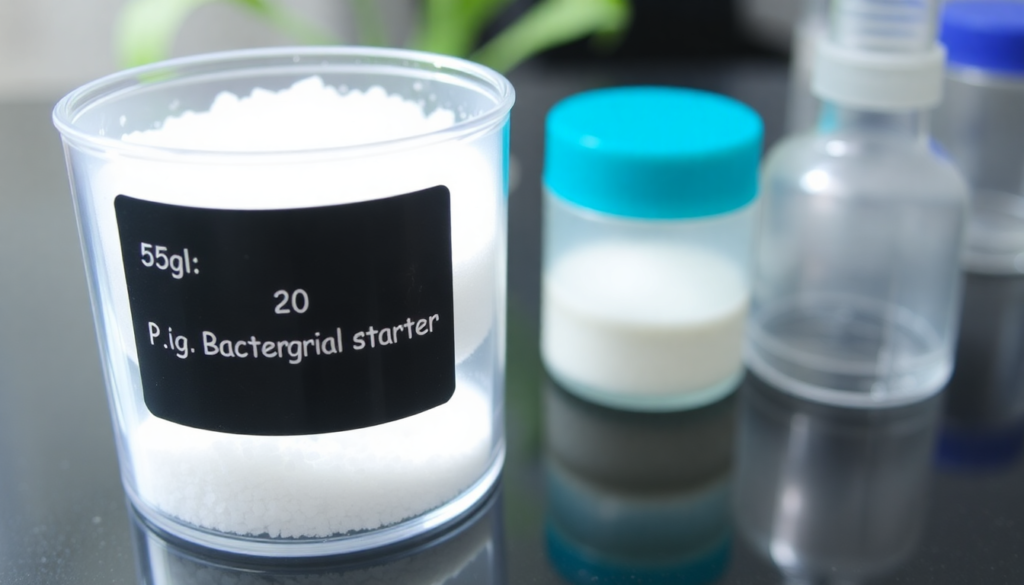When most people think of bacon, they imagine the standard breakfast staple – salt-cured, maybe smoked, and ready to fry up in a pan. But there’s another world of bacon that combines ancient preservation techniques with modern food science: lactic acid fermented bacon. This unique preparation method not only creates an incredibly complex flavor profile but also connects us to thousands of years of food preservation history.
What Makes It Special?
Lactic acid fermentation isn’t just another way to cure bacon – it’s a transformation that creates something entirely new. The process harnesses beneficial bacteria to produce lactic acid, which not only helps preserve the meat but develops deep, complex flavors that you simply can’t get from traditional curing methods. Think of it as a sourdough starter meets charcuterie – the good bacteria do all the heavy lifting, creating a symphony of flavors in the process.
The Science Behind the Magic
At its core, lactic acid fermentation is a beautifully simple process. We introduce specific bacterial cultures (usually Lactobacillus and Pediococcus strains) to the meat, along with a touch of sugar to feed them. These helpful microorganisms consume the sugar and produce lactic acid as a byproduct. This gradual acidification does several important things:
- Creates a hostile environment for harmful bacteria
- Develops complex flavor compounds
- Improves the meat’s texture
- Contributes to preservation
Making Your Own Fermented Bacon
Note: This process requires careful attention to food safety and precise measurements. Always use proper equipment and follow strict sanitation procedures.
The Essential Ingredients (per 1000g of pork belly):
- 25g salt (2.5%)
- 2g Prague Powder #2 (0.2%)
- 5g dextrose (0.5%)
- 0.5g bacterial starter culture

The Process
- Preparation: Start with fresh, high-quality pork belly. Remove the skin and ensure all equipment is thoroughly sanitized.
- Curing Mix: Combine your salt, Prague Powder #2, dextrose, and starter culture. This precise mixture creates the perfect environment for fermentation.
- Application: Thoroughly coat the pork belly with the cure mixture, making sure to cover every surface evenly.
- Environment: Vacuum seal the meat or place it in a sealed bag with as much air removed as possible. This creates the anaerobic environment our friendly bacteria prefer.
- Fermentation: Keep the meat at 65-70°F (18-21°C) for 24-48 hours. During this time, the bacterial culture works its magic, gradually lowering the pH of the meat.
- Final Steps: After fermentation, rinse the meat, pat it dry, and if desired, cold smoke it below 80°F (27°C). Finally, hang it to dry in a controlled environment until it reaches your desired texture.
What to Expect
The finished product is something special. The fermentation process creates a bacon that’s:
- Tangier than traditional bacon
- More complex in flavor
- Slightly firmer in texture
- Uniquely aromatic
When cooked, fermented bacon develops a depth of flavor that’s hard to describe – imagine the complexity of a aged cheese combined with the satisfying umami of cured meat.
Safety First
Working with fermented meats requires attention to detail and respect for food safety:
- Always use fresh, high-quality meat
- Maintain strict temperature control
- Use precise measurements for curing salts
- Monitor pH levels during fermentation
- Watch for any signs of unwanted mold or off odors
- Keep your workspace and equipment impeccably clean
Beyond Bacon
Once you’ve mastered fermented bacon, a whole world of fermented charcuterie opens up. The same principles apply to creating everything from salami to coppa, each with its own unique characteristics and challenges.
The Future of Fermented Meats
As interest in traditional food preservation techniques grows, lactic acid fermentation is experiencing a renaissance. Craft butchers and home charcuterie enthusiasts are rediscovering these ancient methods, often combining them with modern technology and food science understanding to create innovative new products.
The art of fermented bacon sits at this fascinating intersection of old and new – ancient preservation techniques meeting modern food science. It’s a reminder that sometimes the old ways, combined with current knowledge, can create something truly extraordinary.
Whether you’re a curious food enthusiast or a serious charcuterie craftsperson, exploring the world of fermented bacon offers both challenges and rewards. The process requires patience and precision, but the result is a unique culinary creation that connects us to thousands of years of food preservation tradition while pushing the boundaries of what bacon can be.
